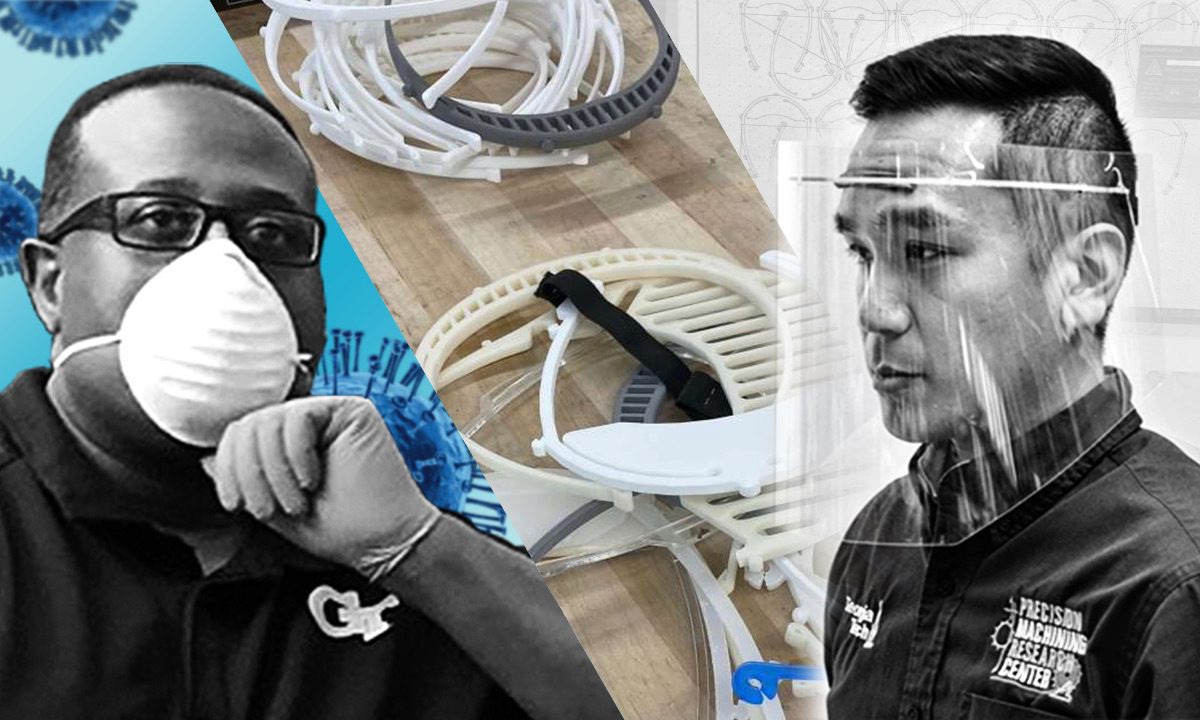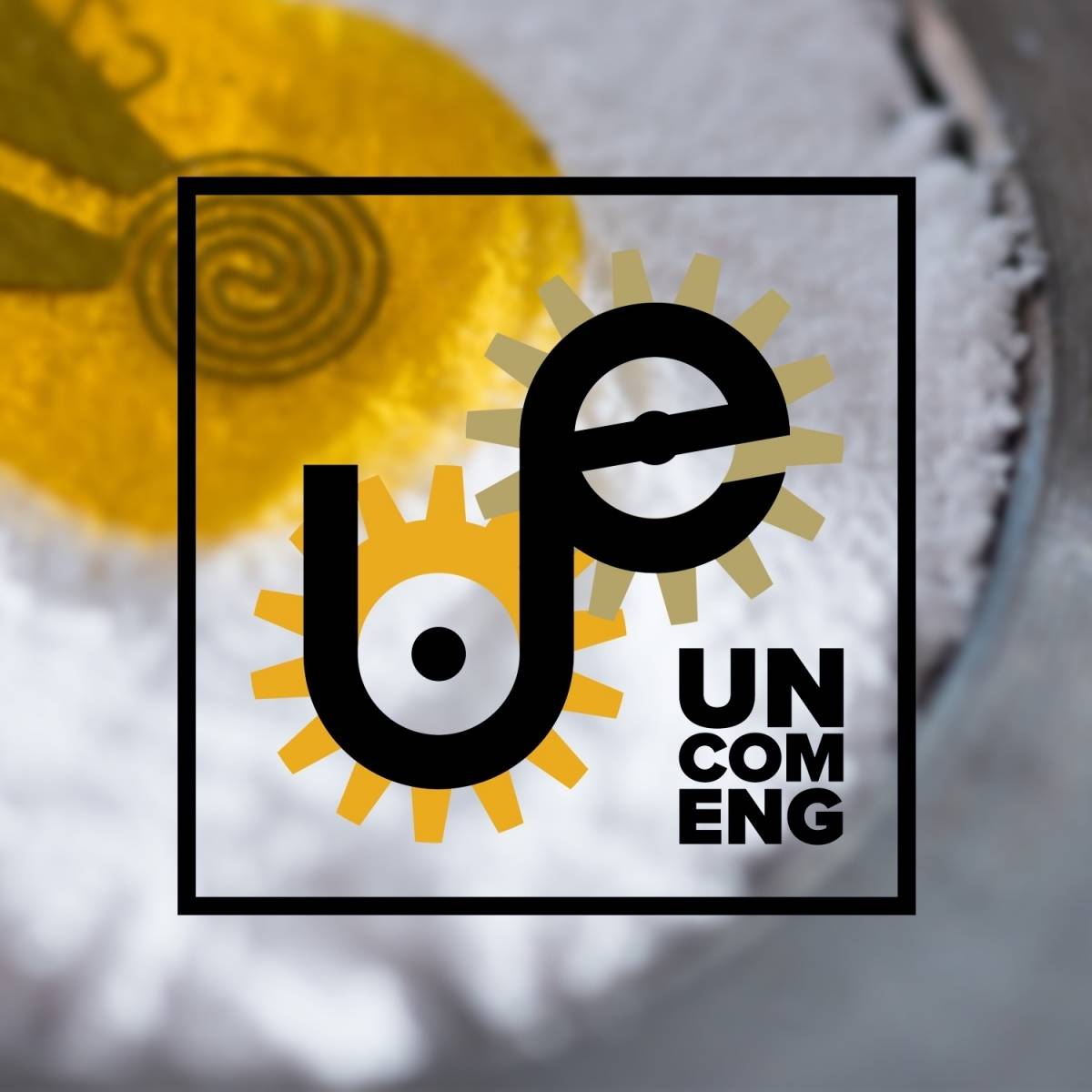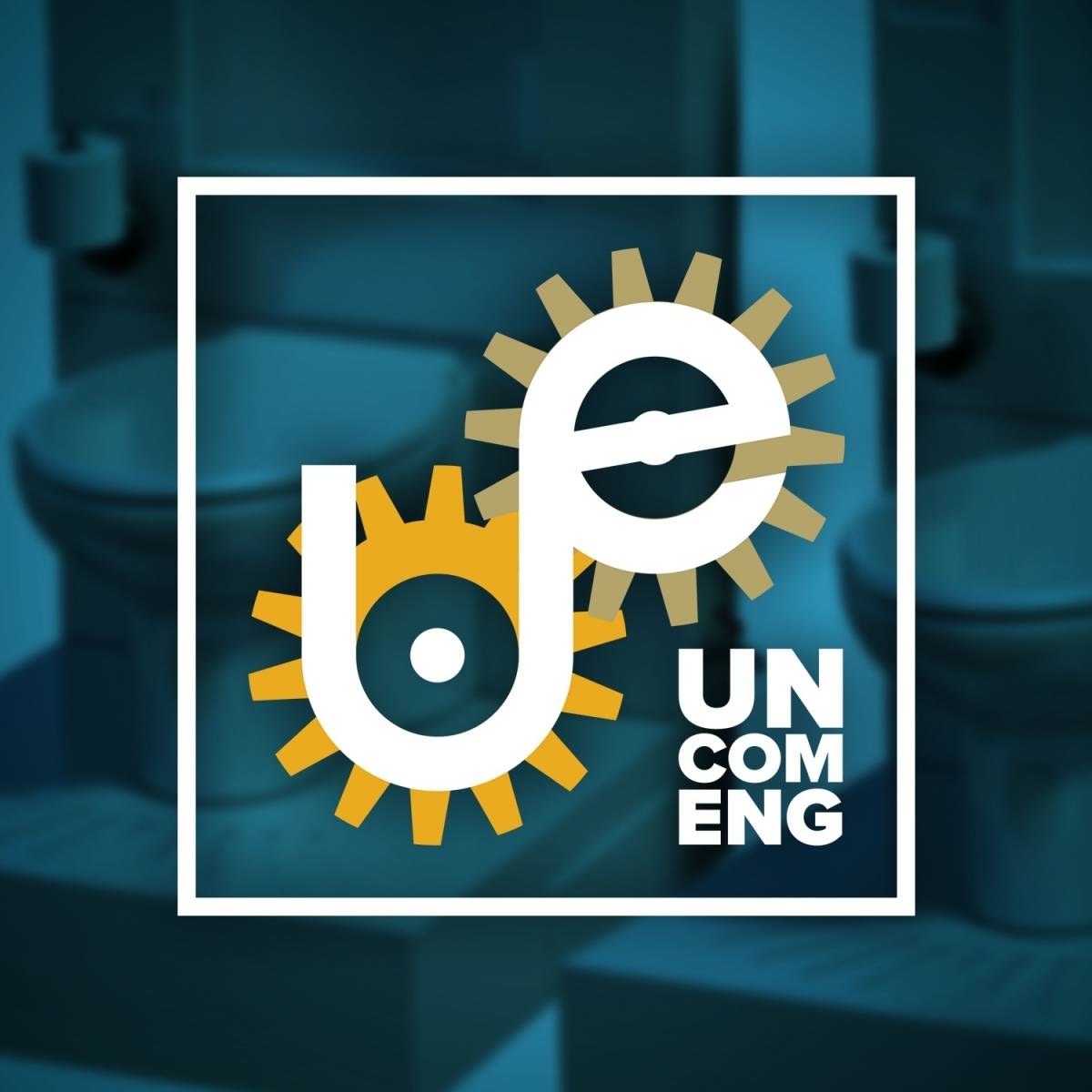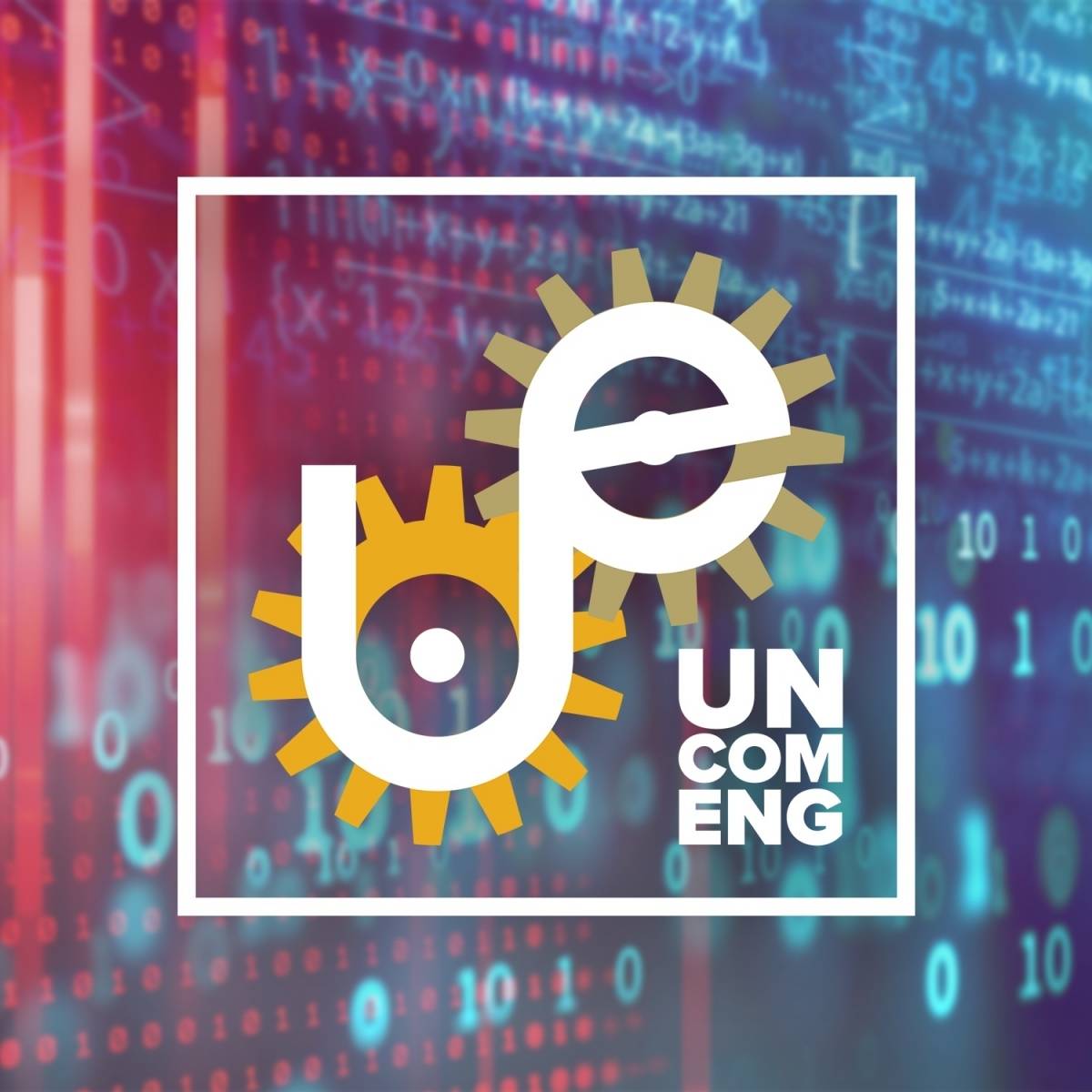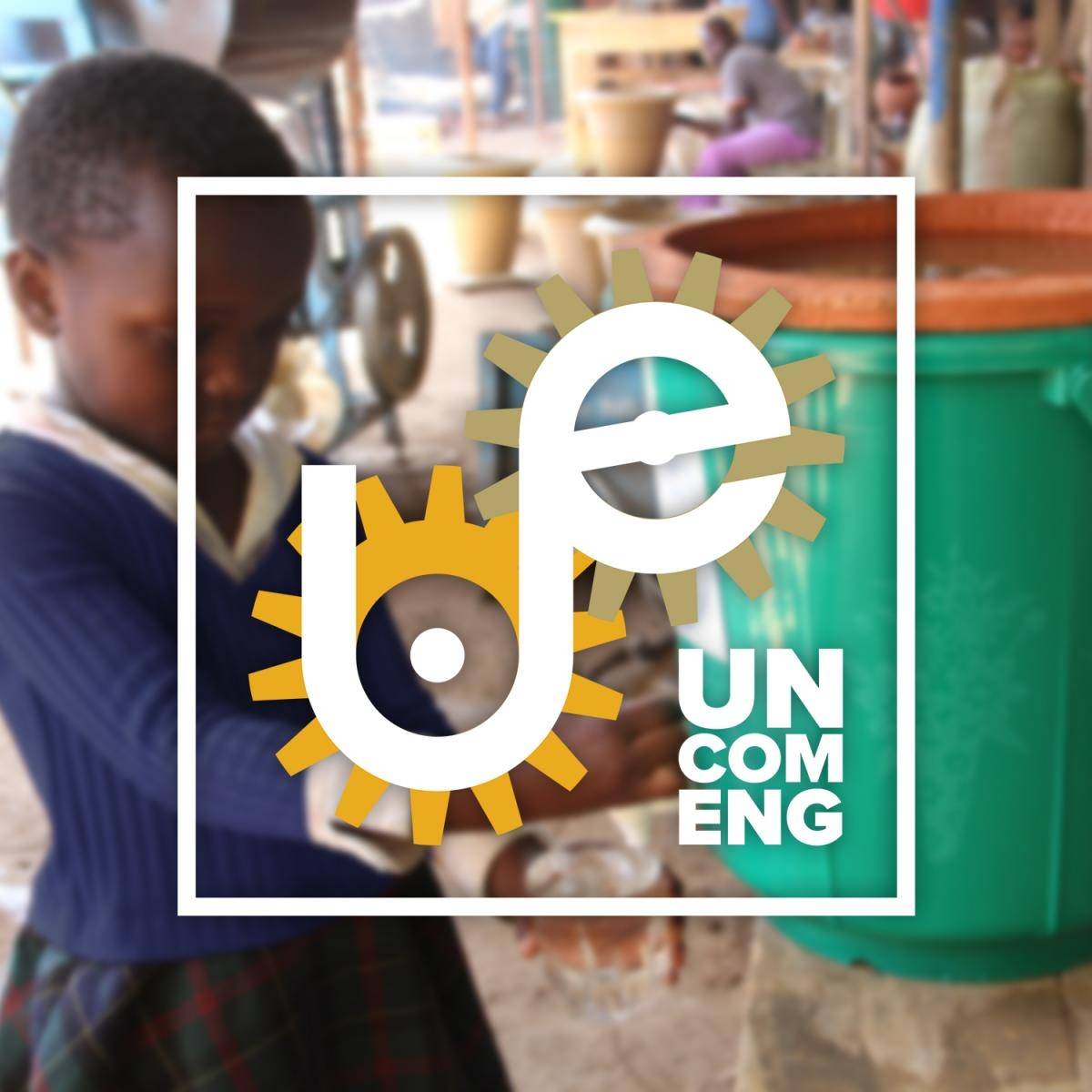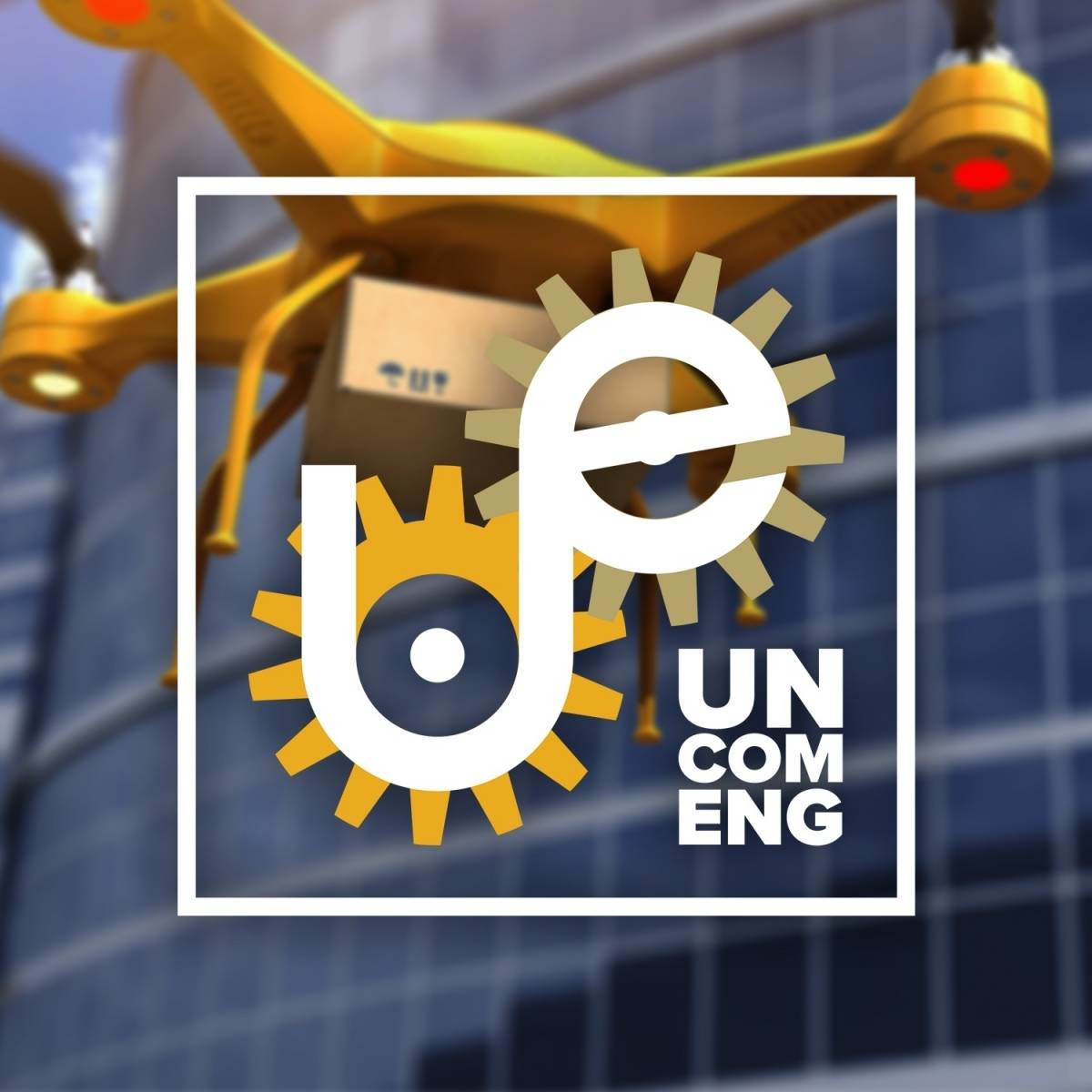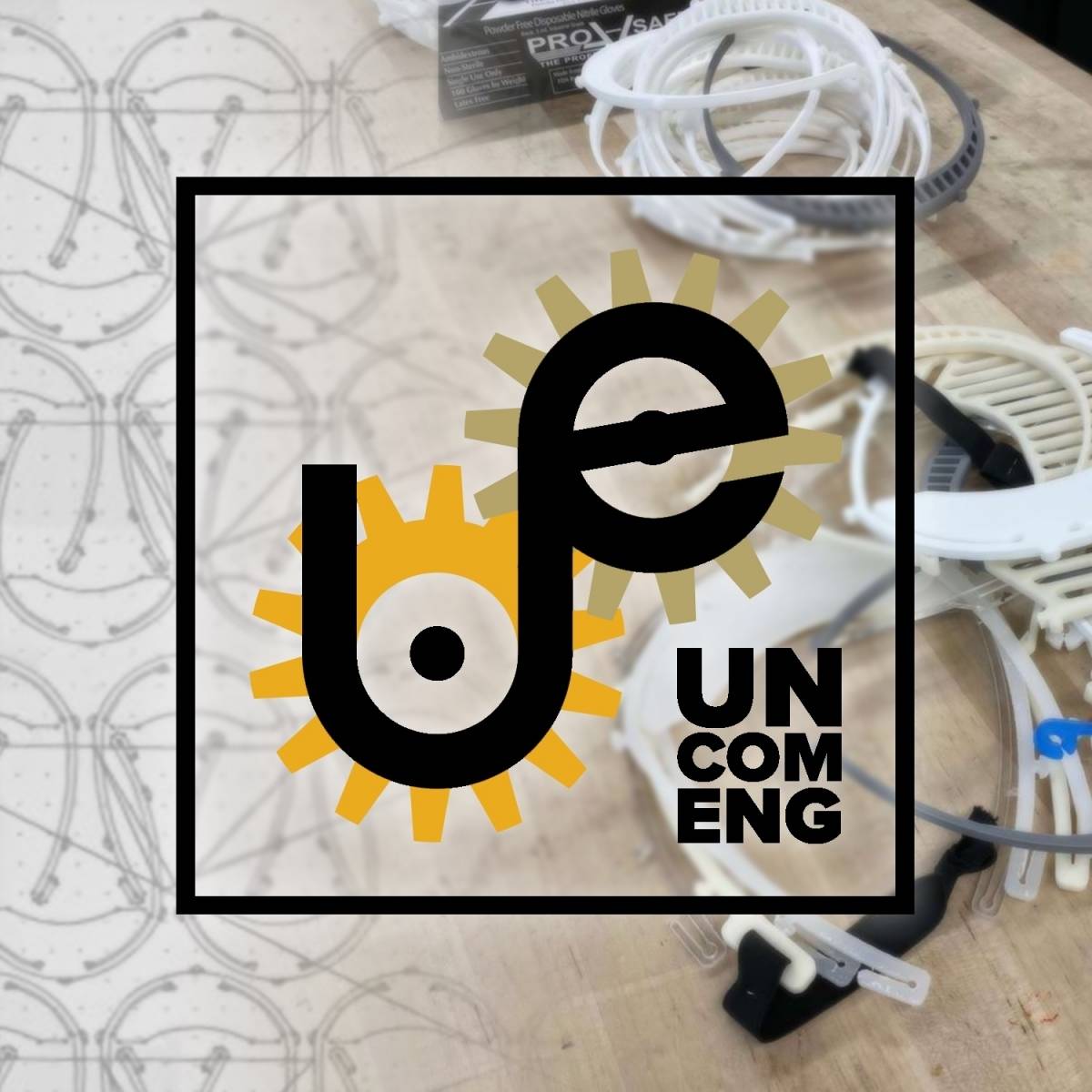
Steve W. McLaughlin
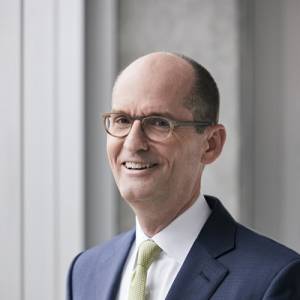

Samuel Graham
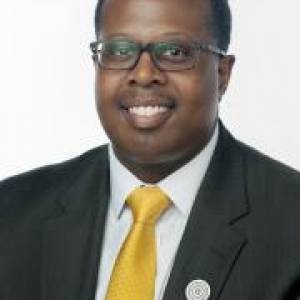
Audio
Audio & Captions
Transcript
Steve McLaughlin: The COVID-19 pandemic has created unprecedented changes and challenges in our world and nation. With personal protective equipment and other medical devices in short supply, engineers within the college are doing their part to help the healthcare system during this crisis.
[steam whistle]
[applause]
[marching band music]
I'm Steve McLaughlin, dean of the Georgia Tech College of Engineering, and this is The Uncommon Engineer.
[music]
Man: [archival recording] We’re just absolutely pleased as punch to have you with us. Please say a few words.
[applause]
Steve McLaughlin: Welcome to another episode of The Uncommon Engineer podcast. I'm Steve McLaughlin, dean of the Georgia Tech College of Engineering. The Uncommon Engineer discusses how Georgia Tech engineers make a difference in our world, in our daily lives, and in ways that you might not expect. I'm speaking to our guests today virtually due to, of course, social distancing. They include Professor Chris Saldana in the Woodruff School of Mechanical Engineering here at Georgia Tech, and Samuel Graham, school chair of that school. And we're here to talk about the work they're doing to fight the spread of COVID-19. Welcome to the program, Chris and Sam.
Chris Saldana: Thanks for having us.
Samuel Graham: Thank you.
Steve: So, wow, you know, it’s just really amazing what's happening in the world today. And anybody who's kind of tracking things has seen actually Georgia Tech in the news a lot. And a lot of that work is due to you, Chris, and you, Sam, as well. And so maybe the best place to get started is talk a little bit about the work that you've been doing, maybe in face shields to start, because I know there's other work. Can you talk a little bit about the work? How did it come to be? How did you get going and the kind of impact that it's had already? Chris, you want to take a stab at that?
Chris Saldana: Sure. Thanks, Steve. Thanks for the introduction. So as you were mentioning, there's a lot of effort that's been going on here at the Woodruff School in the area of face shields. Face shields are some of the more critical PPE, or personal protective equipment, that hospitals need to protect even more critical pieces of equipment, like N95 masks and respirators, from contamination.
So when we got together as a group, a large group of faculty across the College under leadership of Sam as well as Dr. Susan Margulies in BME, looking at what are some of the areas that we need to get active in and what are some of the areas that are immediately important to the healthcare workers at Emory and other hospitals in the Atlanta area, face shields is one of those areas. So we had these discussions and touch points with Susan and the other clinicians at Emory where we rapidly got on this problem. It actually happened very closely-timed with the shutdown here on campus when we decided to put people on work-from-home, telework, and shut down the facilities. So myself, a couple other students, and faculty members got critical access here to the Institute. In particular here, in the Woodruff School, we have the Flowers Invention Studio, as well as other prototyping facilities where we knew this was going to be critical for us to actually develop some solutions for the clinicians here in Atlanta on a quick order and quick pace. So we got that ability to access that space. We started interfacing very quickly with clinicians at Emory University Hospital as well as with Children's Healthcare of Atlanta to start looking at what are some designs and approaches that would be useful in the area of face shields.
So we started with one of my colleagues, Dr. [indistinct], on open-source design. So this is an example of one open-source design that the community had put out. And then when you when you look at these kinds of designs, the challenge really is that these are really built for, you know, the ones that diffuse, in terms of producing components for your friends, your neighbors and things like that, but when you look at— and we're talking with the clinicians here in Atlanta— it was really about the need was going to be in the order of tens of thousands in a matter of days or millions in a matter of weeks across this region and across Georgia and across the U.S. there would be tens of millions.
So we started asking the question, how do we take these open-source designs and then not only start producing components here to satisfy the local need in an immediate way, but also build something that could be scaled. And with Sam and with other people here in our departments, Steven Sheffield and our technical staff, we've been able to engage with companies like Siemens, Delta Airlines, Dart, and Coca-Cola to actually start looking at how do we produce this for the national need in that same order. So it's been a— it's been a wild ride. We've been able to get the students engaged. They've had a lot of great exposure to this rapid design problem, working with stakeholders, trying to keep an honest view of their designs and really responding and dropping the things that aren't critical for what is needed in the healthcare workers’ environment. So it's been a very rewarding experience in that regard. And it's folks like Sam that have helped us knock down barriers to actually get things done quickly.
Steve: And so, Sam, you know, sometimes we're criticized at moving at the pace of academia. You know, things can sometimes take a long time to do stuff. But I have a feeling this— I know that this all happened really quickly. So from the time that— it sounds like, Chris, some of these meetings took place and they said, “Hey, let's focus on face shields.” From the time that happened till the time of the first face shield was delivered, can you talk about how quick that was and what it took to make that happen to connect all the dots?
Samuel Graham: So I think, you know, when you bring together really good people that are motivated and be given the resources, they're going to run with it and make things happen, and that's really what happened in this case.
So I remember being on a call using Microsoft Teams; it was through a Slack channel we had started getting together. And there was a discussion about making the face shields. And I remember I recall that I had this role of PET film in my in my lab. It was about a 100-foot roll. And I said, “Hey, let me run to the lab and get it, and give it to these guys,” you know, start feeding them with resources. And I think by the next day, you know, the next morning Chris had called and said, “Hey, we had x-number that were already made.”
And by the end of the day, I think you guys had 120 of these things made. And so it didn't take that long. So the thing that I think you find here in the Woodruff School which is really, really good is that we've had this culture for the students of rapid innovation and providing resources to students, and now that the students weren’t in the spaces and they were empty, it allowed the faculty that had that same drive to get in there with a few of the students that were remaining in order to do that. So I was very, very happy to see the quick utilization, the quick turnaround. I knew that the need was dire. The other thing is that I think that was really important is that we started out with 3D printing and looking at a few other techniques and listening to people like Susan Margulies from BME. When she told us that the needs, that one local hospital could go through 2,000 of these in one day, it immediately said, “You guys need to think about this problem at a different scale, and you need to think about it using different techniques.”
And I think that's one of the things that caused us to turn from 3D printing to move to other scalable techniques very early on. And the other thing that it did is it made me think about what are the resources that are needed in order to produce, you know, 2,000 a day multiplied by x-number of hospitals in the area. And I think one of the resources I was able to use that people may not have thought of was that I called up Development. I said, “Development, you have connections with industry. This is what I need. Can you connect me with this company? Can you connect me with that company?” And using our Development officers here at Georgia Tech led us to some of the first breakthroughs to have some of the big donations of materials that came in to allow us to scale very, very quickly.
Steve: Yeah, and so— and so all that, geez, all that happens just within a matter of days. And so I'm really curious, again, because I think there's a lot of— a lot of our listeners are high school students and other engineers— and so you produced the first 150 face shields, and so what do you do next, right? Are they the right design? Are they the wrong design? So you’ve got those 150, and what do you do next?
Chris: Yeah, it's a very interesting question. Typically, in a development, design development lifecycle, you'd have days to iterate, weeks to iterate, with your design team, and then eventually develop a next prototype and then go back out there. So I think when we first produced this, as Sam was saying, we had this hundred that we produced on a Thursday. I showed it to a doctor on a Friday that came here on campus from Children's Healthcare of Atlanta. And when you look overall at the end of it, we were done by Monday in terms of our final design. It really needed to be at that pace. And in the span of time over that weekend, what I came to understand as unique about this problem with COVID-19 and the immediacy of the challenge that we were faced with, is that you would have to go through the typical design iterations you would have to go to get through a final prototype, but do it in a matter of 72 hours, 48 hours— that was the time scale that we're working with. And only by talking with the stakeholders, for us we're conveniently— we have this great relationship with Emory Hospital where we can get this rapid feedback from the clinicians and listen to them and really identify with what are the challenges that we face, what are the challenges that they face. So over that weekend, we had students meeting the clinicians directly, clinicians coming here on campus into the Flowers Invention Studio, trying on different things, making those small adjustments that in a typical design and manufacturing environment might be a matter of weeks, but doing it in a matter of hours or minutes, depending on how we were approaching it.
And I think for us, you know, when— I remember showing this prototype— it was actually this one with a with a shield on it— and then we ended up with the final one here that we iterated on. I remember showing the first design to the clinicians saying, “OK, we'll get something ready by the end of the weekend.”
And they said, “No! you need it done now!”
And it was really those kinds of urgencies that we were getting from the clinicians that were, I think, very impactful for not only for myself, but for the students that were in the room listening to the need. I think one of the Children's Healthcare of Atlanta doctors actually said— he said point blank to us, “Every minute that you spend designing, people are going to be dying.”
So you have to iterate quickly and you have to get to that endpoint because to turn this over to not only our manufacturing resources here at the Institute, but also manufacturing resources that Sam has been able to muster with companies like Siemens, Dart, Coca-Cola and other folks that are getting engaged in the fight for this particular effort.
Steve: Wow, so you're like four or five days into the whole thing; you’ve got the final design, and you have doctors and hospitals saying “We need thousands.” So you're ready, right? I think you're ready. So how do you get— how do you start to meet that demand, Sam?
Sam: One of the big things of meeting the demand, and again, is finding help. So where you need help, that's where you go and look. And so we're fortunate to have other groups on campus, like the Georgia Tech Research Institute, some of the other makerspaces, volunteer to provide additional machinery, so that way we could cut materials and start making the headbands and the face shields. But in addition to that, to go to even larger scale, I was able to turn to our friends at Siemens. And when you turn to a large company like that, they're used to producing things on scale. And what I mean by that, it's not the 100 that we produced in the first day. They can produce thousands in a day. And so they're used to doing this, and so you turn to those experts and say, “Help me scale.”
And luckily, we had people like Barry Powell from Siemens that came alongside of us and said, “I'll help you find the vendors.”
They also invested; they took some of their money to help find additional resources here in Atlanta and actually paid some other vendors to cut materials for us. And so we were able to go from producing, you know, say, 100 in a day to producing a few thousand. And so this is something that, again, finding the right partnerships and building on those is something that was able to help us to go from the small amount that we could do to something that was much larger that could meet the needs of the doctors.
Steve: And I know Siemens has been a fantastic partner at Georgia Tech for many years. And I'm kind of going back to details— so Siemens doesn't make face shields, right? And so I'm curious about what, if you know, what do they do internally to, you know, modify their equipment, modify their manufacturing processes, you know, you get to that thousand? Is that easy? Is that difficult? You know, they presumably didn't have face shield manufacturing equipment, so how did they internally move that quickly to then scale up?
Sam: So I'll mention a few things that I think was very important to this. And number one is that when Chris and his team, when they designed the face shield, they designed it so that it would be very, very easy to fabricate and very easy for the doctors to use. And so it didn't require very, very expensive tooling in order to do this. And so when you go to a company like Siemens or Delta Airlines or others that can make these shields, it's something where they don't build these face shields, but they have all the tools that are necessary. Or, Siemens itself also had relationships with suppliers that they could pull in that could easily help us make these. And I think that was a key feature is designing something that was simple, that was very effective, and something that was ready to be scaled, mass produced by very, very simple means.
And so Siemens was able to say, “We don't make these today, but we buy into the story. We understand the need.” And just like telling them the need that, hey, one hospital goes through 2,000 of these a day and that this is going to impact lives, that they bought in and said, “Let us help.”
A few other companies I also want to point out that we're very instrumental very early on is Georgia-Pacific. They donated quite a bit of material for our early designs. And we also had DuPont; DuPont donated material as well as Coca-Cola. And so none of these companies make face shields except for DuPont. And so by telling them what they need was, getting them to buy into the vision that we had, I think that also played into the fact that they believed in what we
were doing and believed in the mission of what the doctors were doing, and that brought them along.
Steve: So, Chris, we talked about, you know, what takes place in the first four or five days, here we are now, what, three weeks later? We're recording this on April the 21st. So where are we now? And what's, for face shields, what have you guys been able to deliver and what do you think is going to happen in the coming weeks?
Chris: So it's been a— yeah, it's been a wild ride these last three weeks or so. And the way that we tiered our approach this problem here in Mechanical and with our colleagues across the different hospitals, was to start fulfilling the need using the resources here at Georgia Tech. Sam had mentioned work with Georgia Tech Research Institute and some of their fabrication services, our own fabrication services here in Mechanical Engineering. So for the first week or two, we were producing face shields on the order of thousands— 10,000 I think is where we basically got to— where we were donating those face shields directly to the hospitals here in the Atlanta area. While we were doing that, we were spending up resources here, working with companies like Siemens to work on the volume problem. So while we were trying to fill this demand on a local level with whatever resources we had, we were spending up this larger effort where now Siemens has, through Georgia Tech actually, contract with the Georgia Emergency Management Agency, GEMA, which is the state-level organization, the analog of FEMA at the federal level, to produce 100,000 face shields. So that's been going on for the last two weeks. They've been producing, I think, they're now at a clip or a rate of about 10,000 per day in terms of kitting up for shipments to the local GEMA warehouse here in the Atlanta area. And those are going to be distributed across local hospitals.
Besides that, other contracts have come in for those same channels. And right now, what we're looking at is as we speak, maybe I think three and a half weeks after this or four weeks after this effort started, about a quarter million on the book for this particular design that we've been producing in connection with Siemens and other companies like Delta, the Global Center for Medical Innovation, and a couple other folks.
Besides that, this is already touched, I think transcended not only our academic departments here in the Institute, but other universities. We've gotten various kinds of data points where universities like Texas A&M, Clemson, and other schools around the world are producing these designs now that were seeded here by students here in Mechanical Engineering, and then aside from that, companies that are affiliated with us that are producing these designs. I think yesterday we got a call, or an email, from Kia Motors that was producing on the order of 4,000 of these per day for hospitals that they're donating.
So in this short amount of time, it's been a rapid effort that's really made an impact in terms of volume. Over the next three to four weeks, I know that we're learning other contracts that are associated with larger efforts for face shields. As more of this information gets out there, we're getting contacted by hospitals in different, different states that have these needs that there's clearly the need isn't fully satisfied. If you if you look at what's happening and you're still getting— like, I think we were on the phone last week with someone that needed 50,000 in Tennessee. So it's those kinds of numbers that are going still be coming in, and it's clear that there's still the need that we need to satisfy.
Steve: And so far, we've talked a lot about the face shields, but I know there's many other things happening beyond just the face shields. And so, Sam, if you want to touch on a few of those, and maybe we can dig into one of those as well. You want to kind of paint the broader picture of it's not just face shields; it’s a whole lot more?
Sam: Yeah. So, again, I think the key here is that as engineers, we're always interested in solving problems. And the nice linkage that we have into the insight into these problems is with Susan Margulies and Emory University, where we learn a lot about their operations and things they’re having challenges with. And so anything that can protect the doctors and the medical personnel, whether they're doing putting tubes into the patient or taking them out, or they're working with COVID treatments, even people they're not sure if they're sick, we need to be able to protect the people that are healthy around them. And so there are other types of protective equipment that we're designing. That includes basically these clear boxes that will basically create an enclosed space around a patient to help contain any sort of viral contamination that will come out. We call these EmoTech airway boxes. And so Chris can probably tell you little bit more about those.
There's other aspects that we're looking at as well in terms of how to do air purification. And so working between Chemical Engineering, Mechanical Engineering and Emory, how do you create filtration sources that last much longer than the ones that exist today? How can you use light sources? So there's UV light sources that are known to kill viruses, and so how can we make them very, very effective so that doctors can utilize them as they're working and have them last for a long period of time? And so there's a lot that's happening in this space in terms of protection that will go around the patient, protection for the doctors, and additional things in terms of looking at decontamination. There's other aspects that are looking at liquids— so how do you replace the current liquid decontamination systems that they use in terms of wipes in the hospital with new sources that could be utilized? And so there's a lot of work that's going on with chemical companies as well as even distilleries now turning to make decontamination liquids that can be used in hospitals. And so we have teams of people here at Georgia Tech that are working with them on those projects.
Steve: Wow, just amazing. You know, Chris, Sam talked a little bit about the boxes— I think intubation boxes? Is that the right term or has the name evolved? But I've seen a little bit about that. Can you tell folks about what that is and then where it stands, where it's headed?
Chris: Sure. You know, again, as Sam was saying, I think it’s that connection with the with Emory University through the Biomedical Engineering program that's been excellent. We saw an open-source design for what was called an intubation box, but better, probably better described as a airway box because it protects both during the intubation process as well as the extubation process whether you're taking someone onto a ventilator and taking them off the ventilator. But we made one of those for Emory University Hospital. They trialed it, and then we started getting feedback. And then we got immediately connected with their anesthesiology teams, their emergency department teams, that happen to do these intubation and extubation processes to actually protect the healthcare worker.
We've been working over the last— so while those face shields are ramping down in terms of the development side and working on the high-volume manufacturing side, we started innovating here in the Flowers Invention Studio on these airway boxes.
So we started working with these two Emory clinicians on looking at what is happening in the operating room, the intensive care unit, and the emergency department in terms of what are the hazards that are exposed to the worker. So during intubation and extubation, what happens is you're inserting various instruments into a patient's airway to get them hooked up on a ventilator, and as they're doing that, natural reactions would occur where, for example, a patient might cough or like release the aerosolized versions of COVID in the room. And it's extremely hazardous because of the known ability of COVID to infect various people just by the aerosolized particles themselves. So there is not many viruses like that. There's tuberculosis as an example, but tuberculosis isn’t such a big problem here in the United States at the moment, so there's not really any PPE for these kinds of procedures. So this is a brand new product that needed to be developed in short-order so that it could be used in these different spaces.
So we started working with these with these two clinicians at Emory on a design that folds flat because when you're in the operating room or the ICU— those are very dynamic environments, just like the emergency department— where you need to be able to have equipment that doesn't take up such large room. When you think of the typical static boxes, that's a very challenging situation. So as Sam was alluding, we developed a folding box, and I'm actually sitting right on the production line for this folding box right now here in the IDEA laboratory, which is an Autodesk laboratory where we've had students, a new set of students, because we can't demand enough of time of all of our students on all these projects. We’ve rolled in a new set of students here to rapidly design this, innovate with healthcare workers. And it was, again, a very similar story where we had healthcare workers coming here on campus to look at our designs, to give us feedback. And I think what I remember is [indistinct] over here just on the other side of the room, one of those anesthesiologists [inaudible] to come in here and started breaking down and talking about her colleague getting infected by COVID; they had to intubate their colleague because they became exposed to the virus through the operating room. So that lit a fire under our students because, you know, they could see the immediate impact of what they're working on in the healthcare workers’ lives.
So we developed some prototypes over the span of a week. They immediately started getting used for intubation and extubation processes at Emory. And now, you know, through people like Sam, we've been able to engage large companies. Siemens, in that same facility where they're producing face shields, now have an assembly line for intubation boxes. So they're working right now on an order for Emory that's 200 boxes in size where they're immediately— I think we had our first delivery on Friday, which is three or four days ago, three days ago, and the doctors were literally putting them into their cars to bring to the hospitals that are part of the Emory system— so that would be Emory-Decatur, Emory-St. Joe's, Grady Hospital, and all the other hospitals in Emory system.
So it's a, again, another story where we have this great innovation space here, this prototyping space, in the Flowers Invention Studio, and we're able to meet a need that is immediate for healthcare workers.
Steve: And so all those boxes right now are being manufactured on campus or you have partners to work on that as well?
Sam: I'll talk a little bit about that. We definitely have partners. So GTRI is partnering with us to help. But again, our friends at Siemens have come through, and they're helping to build 20 to 30 of these boxes a day. And so, again, we're very, very thankful for their help. And what we're able to do is work with hospitals, obtain the material. Chris’ team has the design. One of the things I do want to mention that is fairly unique about the design is that it helps to control some of the airflow. So Chris and the team did a lot of testing to look at where air might flow through these boxes and to make sure that there was some protection for the doctors. And so that was a second level of things that we were able to do and sort of trying to prove or go through some validation that it would be useful in the hospital. But yes, between Georgia Tech, which is producing as well as Siemens, we're kitting these things up in and taking them out to the hospitals.
One of the things that I do want to go back and sort of re-emphasize the interest in these boxes and what doctors are facing. I recall that we had a phone call one day and it was it was a Sunday, and it was a Sunday probably around 3:00 or 4:00 p.m. And, you know, we had a full team of doctors from a local hospital on a call with us explaining to us the urgency. And I think if we had boxes literally that day, they would’ve come to our houses and picked them up. They needed boxes to go intubate, to do intubations the next morning. And one doctor even explained, it's not just the COVID patients that you think of in the, say, the emergency room, but they're also labor and delivery where they're having to deal with the delivery of the child as well as COVID mothers, and they needed those desperately.
And so these are the stories that— you know, so I recall that, you know, my daughter was born in intensive care, and so when I think of those kinds of stories, it makes me say, whatever I can do to help doctors in these positions, I'll do what I can. And so I think from that point of view, again, as you hear what they're going through and you hear them talk about what they're facing, it makes you want to do more as much as you can to help them.
Steve: Just amazing. And, you know, I think the— here we're talking about, you know, kind of the process of taking these, you know, the manufacturing, but I think the parts in which I've been involved with where, you know, Chris, one of your, you know, some of the TV spots are out there and someone will contact me directly— “Hey, I have a doctor. I know a doctor at Grady who needs this or hasn't gotten this,” and in ten— feels like ten seconds— being able to connect to you, Sam, or to Susan, and I think and very, very quickly, you know, work on the problem at that scale, on the individual, on the human scale, and so it's not just, you know, engineers working in the background on a design and getting it to a manufacturer, that the kind of impact you're having because of our network and because of who we get to work with, that impact is direct on individual people. And I know you must have, you know, dozens or hundreds of those stories, and part of me wants to kind of hold on to those stories because those are the things that our students are going to remember. And that's kind of what I wanted to move towards is students. What do you, you know— talk about the experience that these students are getting, the things that they're saying, or what you think the impact of all this has been on them.
Chris: I think we have excellent students. You know, when we— when they caught wind of what was going on, they were— I mean, we had more volunteers than we could bring into the space. I mean, the reality of this particular problem of COVID compared to, I think, you know, people compare it to World War II, where you could get in the factory and everyone can produce things together to actually make a difference for that effort. It's a lot harder in COVID because you have to implement social distancing; you can't have 50 people in a room working on something because of the inherent danger of that. But when we— when I started reaching out to students that wanted to get engaged with, “Hey, there's this need. We have to be able to get prototypes to doctors,” you know, there was more volunteers than you could imagine.
But the students that we did get in the space, you know, they were extremely motivated. We spent— and not only students, but technical staff as well— we had people that typically don't come in on the weekends, come in and work 16-hour days to actually kick out prototypes for the doctors. And especially after they got to speak to those frontline healthcare workers and hear the the challenge that they face, it just motivated them more, and it was really incredible. So, you know, the rapid maturation of not only seeing a design process go all the way to volume manufacture in a matter of one week is incredible not only for the students’ perspective, but also, you know, for example, on these intubation boxes that we're working on now, one of our doctoral students designed the box and actually has worked with Siemens to set up the assembly line and the quality documentation and all that. So a captive set of engineers that have been in the workforce for dozens of years listening closely to our graduate students on how do you take and implement this design because it's really that that shortened timetable that you needed to realize that on, so you need to talk to the person that designed it. And not only— it's not only just a one-way street where the student is able to inform them on the design, but also to look at the design and say, “Can we can we make this substitution or can I make this change? Is this absolutely needed?”
So it's that kind of, I think, a unique experience that the students that have been able to get engaged to have been really benefiting from.
Aside from that, we also had undergraduate students get engaged. Unfortunately, undergraduate students can’t come on campus with the rules that we have in place for obviously mitigating the hazards that we have with COVID-19, but we've been able to engage with students to work on virtual kinds of problems. So, for example, on the face shield effort when we were going through volume manufacturing on this particular product, natural questions that come up with a manufacturer like “Can I replace the shield or replace the body of this device with something else— a different material that might be in greater supply?” And those are very challenging questions to answer without having to do the prototyping. But we have simulation capability.
So we had a team here in the Flowers [inaudible] that did finite element simulations. And actually they were talking with a team out of NASA at JPL on can we use Ultem instead of polycarbonate? So there's been a great engagement not only of people here— students and staff and faculty here— and the being able to actually access the prototyping space, but also students that have gotten engaged on the greater engineering problem that we're facing. So it's been, I think, a great experience for them, and I've been really happy to be a part of that.
Steve: A lot of what you've been hearing, you know, on the news is, you know, “The world's never going to be the same.” You know, there's some fundamental things about what we do, how what we do are just going to change. And, Sam, I'm really curious about, based on what it is you've experienced, how do you think we're going to change? How do you think the university, a place like Georgia Tech that can really, really contribute in not just small ways, but in huge ways? We don't normally produce face shields and deliver them to hospitals on the order of days, but now we're doing that, and I'm really curious— how do you think we’ll change? What will come out of this that will make Georgia Tech a different place?
Sam: That's an interesting question, and it's hard to say exactly what the future is going to hold, but the things that I've learned, that I'm walking away from this experience with, is that, you know, again, small design teams that are seeded with the right people and given the right resources, they're going to make an impact. And so I think that I can see coming out of this a permanent interaction between our designers and our engineers with doctors at Emory, doctors at CHOA, doctors at Piedmont Hospital— the local hospitals here. And I think we're gonna be working on not just the rapid problems that need a turnaround in a few days, but what is really the future of medicine going to look like? We're talking about now of going to telemedicine, which people have been working on for a while. But I think there are people like manufacturing engineers like Chris Saldana, and there's other people that are in materials, other people that are in robotics that may not have thought about what's their role in the future of medicine. And I think we're going to see more people coming together to figure out how to solve these problems, not just engineers sitting on this campus, not just the medical personnel sitting over at Emory, but doing it jointly. And so I think that's one of the things I see that's going to be new.
I think we're also going to look at ways that we do research and how to bring teams together. I think this has been a sort of a uniting experience on campus. You know, we have people from the College of Sciences, people from College of Engineering, people from other schools that are coming together to look at these kinds of problems and provide their input, and they're all valuable. And so I think this kind of inspiration is going to be seen and it's going to live on after COVID is in the history books, but we're gonna be able to live off of this and make new progress.
Steve: And Chris, as a professor who teaches, this is not your day job. Your day job is teaching students in the classroom and advising graduate students and doing some [indistinct] team projects. How do you think what have you learned and how do you think this is going to change your career and how you view it and what you're gonna do? How's it going to affect you?
Chris: So in those moments where we were working on this rapid design problem, it really, well, on the teaching side, it really made me think of wow, this is going to [inaudible] great case study for our students. I teach a class called ME2110, which is our Creative Decisions and Design class that you go through structure design processes, teach students how to work together on a team to actually solve a problem, and that's exactly what this was. I was sitting in together with these clinicians and some manufacturers working through design down-select, which is a structured process by which you look at the merits of each design and actually pick the preferred designs. And I was sending pictures of these charts and things like that, the tools that we were going through to my class, saying that, “Hey, even though that you're away from campus, know that this is happening right now, and I look forward to incorporating it into my lectures for the fall semester.” I think it's going to be a great connection point to what the students are learning here on campus to what really is happening in the real world.
And then besides that on the on the research side, as Sam was saying, I think that, you know, typically manufacturing the way that— and that's what my research area is— we look at it a triad; you're looking at cost, quality, and speed and usually you pick two, and you have to sacrifice one. And I think in what COVID has taught us, and what future manufacturing will be for all of us, will be also looking at immediacy because that's not typically something that we think of in discrete manufacturing. Usually you have time to produce a product and iterate it with your stakeholders, but the threats that we have in front of us, whether they're there in healthcare or in defense or in energy, it’ll really be this unique dimension of immediacy where it maybe becomes more of a pyramid instead of a three-dimensional space that you can work with. So I think that is something that I look forward to engage in with in the future. And I think that the resources here at Georgia Tech really enable us to do that through rapid prototyping, rapid design, and working with stakeholders like in the healthcare sector that we have in Emory, Piedmont, and Children's.
Steve: So Chris, to follow up, so you had said “cost, quality and speed” and you only get to pick— normally you only get to pick two; you gotta compromise the third. And so—
Chris: [inaudible] going to take a while.
Steve: Yes, and so I want to dig into that just more because there's something special that happened or, you know, in the midst of a crisis that allows you to do all three, right? I think that's what you said, is that “No, what we learned is you can get all three.” And I kind of want to like, so, why did it take this? Or maybe it's because the quality of, you know, the research that you do that has advanced so quickly, you know, in advanced manufacturing and 3D printing and all that, and maybe that's the secret sauce to ultimately be able to get all three? Can you say more about that? Because I mean, for hundreds of years, people have said you can't get all three, and now you're saying you can get all three, and what's the special sauce to that?
Chris: Sure. And I think actually it's more so that there's an added dimension of immediacy and maybe it's pick three instead of— pick three out of four instead of two out of three. So if you want to actually satisfy something immediately, you're going to have to trade off something in whatever you're working in. I think we work with constrained design, constrained optimization in everything we do as engineers. And in manufacturing, part of the way we looked at these problems, each of these problems, is we have a set of capabilities, whether they be processes, materials or people, and then we say, what can we do and solve within this time horizon. and then what is the volume of that need in this time horizon so that we can schedule our designs in a way that they can satisfy all of those different needs. It just so happened that we came up on a design that I think satisfied that particular need, both in the order of the [inaudible] thousands in one week to millions in three weeks.
And I think maybe one way I'd look at it to answer your question would be, in this case, it isn't fully about what is the best design that's out there; what is your minimum viable product that you can get out there that will make a difference. I remember mentioning that term to one of the doctors and they're like, “Absolutely. We need something that's not the best thing out there, but it's something that will get the job done for the level of the problem that we have.”
So maybe the relaxation of constraints comes in the design in that sense. But we, of course, have to obviously take into consideration all the needs of various stakeholders, like in this case, healthcare workers.
Steve: So, you know, one of the things we've talked about, the local impact of the work that you're doing, but I'll bet that it has global impact. And, you know, for the face shields, it has a low-cost aspect that might be scalable to economies that can't afford expensive products. Sam, can you talk a little bit about either that or other things that we're working on that have a global impact maybe because they are lower cost?
Sam: I would say that one of the things we’ve tried to do in terms of designing a lot of these products is making sure that it would work here as well as work in other places of the world. So, you know, you look at the issue of ventilators, you know, people are saying that there are certain areas of the world that are going to be low in terms of the number of ventilators compared to the demand, and so we have professors like Shannon Yee and Devesh Ranjan that have taken bag-valve-mask ventilators, and so these are what you typically see on an ambulance. They are the bag that you may see medical personnel pushing with their hands to basically give air to a patient. And the issue that you see there is that someone has to squeeze that bag manually. And so what some of our teams have done is taken a ventilator based on those bags and actually taken a mechanical motor to actually squeeze those bags so someone doesn't have to do that manually. And so one of the designs that was developed by Shannon Yee is able to take two of those ventilators, provide sufficient airflow for a patient, but then also it has just basically a simple motor that can run off of a 12-volt battery. And so that was done specifically so that you can have this ventilator run for hours without being plugged into the wall. And so this very simple ventilator could be mass produced. It could be used here in the U.S. for, I think the target range is around the $100 to $150 in that range to build it. And it can also be used in third world countries or developing nations. And so the eye here is to say, you know, how can we take these simple ventilators and get them to the areas of greatest need with as little cost as possible.
And so I think the groups have done a magnificent job in terms of looking at not just what is needed locally, but what may be needed in other countries that may not have the infrastructure that we have here in the U.S. to treat medical conditions.
And so I think one thing that you will see is that in order to manufacturer this— just as the same way we talk about the face shields— very, very simple designs, very, very simple to cut out, very simple and easy to assemble, and that's something that could fold up in a very nice flat pack in a small bag and be assembled at location very, very easily.
Steve: You know, and that brings up— because as soon as you start talking about ventilators, you know, I think a lot of people think of, I don't know, I don't know how much the sophisticated ones that you've been seeing on TV, probably thousands of dollars, and now you're talking about $100, and it comes back to the face shields as well, and throughout the whole process, I've been thinking about what kind of approvals are needed to actually be able to use the equipment, I think. And Chris, you didn't mention that all the face shields need some kind of approval by a government authority in order to use them, and I assume that that's the case, but whereas the ventilators do, and I wonder how is there a natural tendency among your thinking to kind of avoid the need to seek approval and get it out? Or how does— how do we fold that whole— because, again, we're not— Georgia Tech engineers aren't typically in the business of seeking FDA approval for the work that we do, and that's a really involved process. How is that kind of— that's an added dimension to the work that you're gonna do, and has that steered you away from certain things or has it drawn you towards other things?
Chris: I'll add one thing, and then I think Sam can talk about the ventilator. But on the face shields and intubation boxes, yeah, it's interesting. You know, these are typically medical devices that fall under FDA’s regulations, but I think it was in the beginning of April, there was a note sent out because of the need was so [inaudible] we were so far behind the curve as a country in terms of PPE, they relaxed some of the existing regulations on face shields, for example. I think aside from that, you know, when we were doing the first prototyping of the face shield, I had gone to Joann Fabrics in Decatur kind of near where I live, and I started looking for materials to prototype with— Velcro, elastic and things like that. And, you know, what I came across was like four or five Emory nurses that work beside Decatur over there, putting together their own face masks. And the problem was so large that, you know, we have people making their own things. We got connected with various clinicians where we're bringing PPE to their houses. And when they got wind that we were working on intubation boxes, they want those in the hospitals right away to trial with. And they know that that they have to trial these as prototypes— they're not approved FDA devices— but the need is so great and the risks are so significant right now to the healthcare worker, that they'll work with those prototypes to make sure that they understand how it can be used inside the hospital correctly.
So it's those kinds of challenges, even on what we might think of as fairly simple devices that are going to make a huge impact for the healthcare workers. So on the ventilator side, I think Sam has a better understanding of where the regulations are on that.
Sam: So I’ll quickly say that the FDA plays a very important role as we develop technologies that could be used to help patients or help doctors. The FDA puts in regulations to make sure that we don't introduce something into the hospital that, later on, has an unintended consequence that could either the harm the doctor or harm the patient. So as responsible engineers, we always want to abide by getting approval so that we don't do something unintentional.
And so with the face shields we did check with the FDA through our partners, which is the Global Center for Medical Innovation. And so we did a check with the FDA to make sure that those face shields could be used under the current exclusion.
With the intubation boxes, we are currently talking with them about that as well. And the ventilators, because that is going in, especially in terms of a life-saving application to help a patient breathe, that is a very clear one that we need to have some sort of a regulatory approval. And so, again, working with GCMI, we're in the process of submitting applications to make sure that our current technologies meet FDA approval. What is really good is that there are a few other universities, I believe the University Minnesota has a bag-valve-mask ventilator that does have FDA approval. So there's precedent out there that these typical devices, or these kinds of devices, can meet the stringent demands of what the FDA puts into place to make sure that patients are safe. And so we're following up with that through GCMI.
Steve: Well, I'm going to let you all get back. I know you're extraordinarily busy, and I can't tell you how much we appreciate your time for coming in and talking to us on this podcast. You know, I'm one of the luckiest people around because I get to see all kinds of amazing ideas. It's so much fun to see really capable people doing really great stuff. But I think you both have taken that to a whole other level. I know our whole community is extraordinarily proud of everything you’re doing. Just can't thank you enough for all the time and energy you put into helping the community. You make all of us at Georgia Tech very proud, so thank you guys very much.
Sam: Thank you. And thank you to Georgia Tech, and especially your office, for giving us this opportunity.
[marching band music]
In Absentia
We found no additional GEEKOUT content for this episode.

